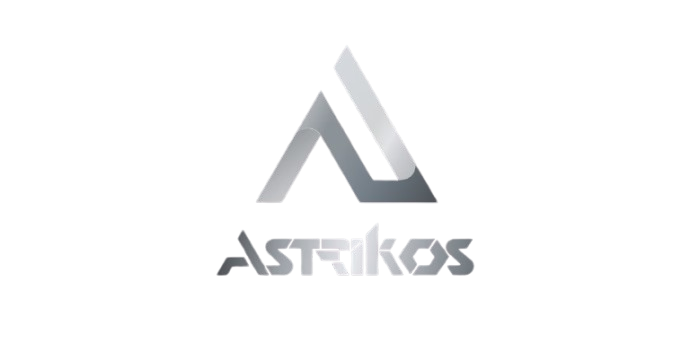Last week, I visited a bearing manufacturing plant outside Pune where two striking scenes unfolded side by side. In one section, robotic arms performed precision welding with superhuman consistency, no humans in sight. In the adjacent bay, technicians wearing AR headsets worked alongside collaborative robots, their movements synchronized in a choreographed dance of production. Same factory, same company, but two fundamentally different approaches to AI integration—automation versus augmentation.
The Dual Pathways of Manufacturing Intelligence
Automation replaces human tasks entirely. Augmentation enhances human capabilities. While superficially similar, these approaches create dramatically different outcomes for productivity, workforce development, and competitive advantage.
Automation: The Replacement Paradigm
Modern automation transcends traditional robotics through advanced capabilities:
- Computer vision systems detecting defects at 50μm resolution (10× better than human vision)
- Autonomous mobile robots (AMRs) navigating dynamic environments using SLAM algorithms with centimeter-level precision
- Neural network controllers that learn optimal process parameters across 200+ variables simultaneously
- Self-healing production lines that reconfigure workflows around equipment failures
The economic case is compelling: automated quality inspection typically reduces defect escape rates by 63-78% while increasing throughput by 35-42%. For repetitive, dangerous, or precision-critical tasks, automation delivers undeniable value.
Augmentation: The Enhancement Revolution
Augmentation takes a fundamentally different approach making humans exceptional rather than obsolete:
- AR/VR guidance systems reducing training time from months to days (Bosch reports 75% faster technician onboarding)
- AI decision support tools presenting operators with optimized parameters based on real-time conditions
- Exoskeletons reducing physical strain while increasing human precision (reducing musculoskeletal injuries by 47%)
- Intelligent assistants providing contextual information through natural language interfaces
A compelling example comes from a transmission assembly plant where augmented workers using AI-guided tools achieve 29% higher productivity than fully automated lines with 94% fewer quality escapes and significantly lower capital investment.
The Hybrid Reality: Complementary Intelligence
The most successful manufacturers are discovering that the automation-augmentation dichotomy creates a false choice. The optimal approach blends both strategies based on task characteristics:
| Task Attribute | Automation Advantage | Augmentation Advantage |
| Repetitive | ✓✓✓ | ✓ |
| Variable | ✓ | ✓✓✓ |
| Creative | ✗ | ✓✓✓ |
| Precision | ✓✓✓ | ✓ |
| Judgment | ✗ | ✓✓✓ |
| Empathetic | ✗ | ✓✓✓ |
This complementary approach creates “centaur teams” hybrid human-AI workgroups where each contributes distinct strengths. In these environments, humans typically handle exception management, creative problem-solving, and relationship tasks, while AI systems handle consistency, endurance, and computational complexity.
Workforce Transformation: From Displacement to Redeployment
The evidence increasingly shows that AI implementation creates workforce transformation rather than wholesale replacement:
- A three-year study across 1,247 manufacturing facilities found that for every 10% increase in AI investment, employment decreased by 2.6% in directly automated roles but increased by 4.7% in new technical and supervisory positions
- Workers transitioning to augmented roles saw average wage increases of 18-23%
- Companies investing in worker augmentation reported 34% higher retention rates
The key difference: organizations that view AI primarily as a cost-cutting tool see employee resistance and knowledge loss, while those emphasizing augmentation experience workforce enthusiasm and accelerated innovation.
Implementation: The Technological Foundation
Building effective automation or augmentation systems requires similar foundational technologies:
- Sensing layer: High-resolution data capture from processes and environments
- Connectivity infrastructure: Low-latency networks (5G/WiFi 6) enabling real-time information flow
- Edge computing resources: Processing capabilities close to the point of work
- AI/ML systems: Algorithms that learn from patterns and optimize outcomes
- Human-machine interfaces: Thoughtfully designed touchpoints between workers and technology
The critical differentiator is intent whether these systems are designed to replace humans or empower them.
Conclusion: The Symbiotic Future
As manufacturing evolves beyond Industry 4.0 toward systems built on ambient intelligence and human-AI symbiosis, the most successful organizations will transcend the automation-augmentation divide. They’ll create fluid environments where machines handle what machines do best, humans contribute distinctly human capabilities, and the boundaries between them become increasingly permeable.
The future belongs not to factories that eliminate humans nor to those that resist technological change, but to those that thoughtfully blend human creativity, judgment, and adaptability with machine precision, consistency, and computational power.
This isn’t just a technical strategy it’s a profound recognition that the unique value of manufacturing lies not in automation alone, but in the powerful synthesis of human and artificial intelligence working as partners rather than competitors.

